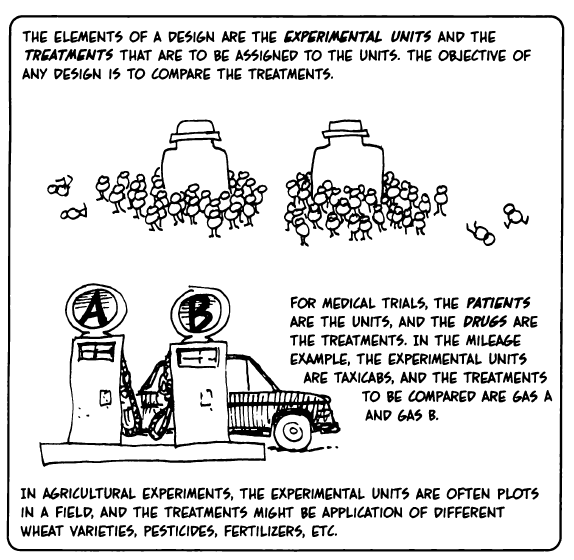8 Introduction
An experiment is a process or study that results in the collection of data.
Usually, statistical experiments are conducted in situations in which researchers can manipulate the conditions of the experiment and can control the factors that are irrelevant to the research objectives.2
The term experiment is defined as the systematic procedure carried out under controlled conditions in order to discover an unknown effect, to test or establish a hypothesis, or to illustrate a known effect. When analyzing a process, experiments are often used to evaluate *_which process inputs have a significant impact on the process output, and what the target level of those inputs should be to achieve a desired result (output). Experiments can be designed in many different ways to collect this information3.
Experimental design is the process of planning a study to meet specified objectives.
Experimental design is a way to carefully plan experiments in advance so that your results are both objective and valid. The terms Experimental Design and Design of Experiments are used interchangeably and mean the same thing. However, the medical and social sciences tend to use the term Experimental Design while engineering, industrial and computer sciences favor the term Design of experiments.4
In an experiment, we deliberately change one or more process variables (or factors) in order to observe the effect the changes have on one or more response variables. DOE begins with determining the objectives of an experiment and selecting the process factors for the study. An Experimental Design is the laying out of a detailed experimental plan in advance of doing the experiment. Well chosen experimental designs maximize the amount of “information” that can be obtained for a given amount of experimental effort.
The (statistical) Design of Experiments (DOE) is an efficient procedure for planning experiments so that the data obtained can be analyzed to yield valid and objective conclusions.1

From MoreSteam Toolbox↩︎
Stephanie Glen. “Experimental Design” From Statistics How To ↩︎
Antonio de Nebrija University, https://ravinesromy.org/↩︎